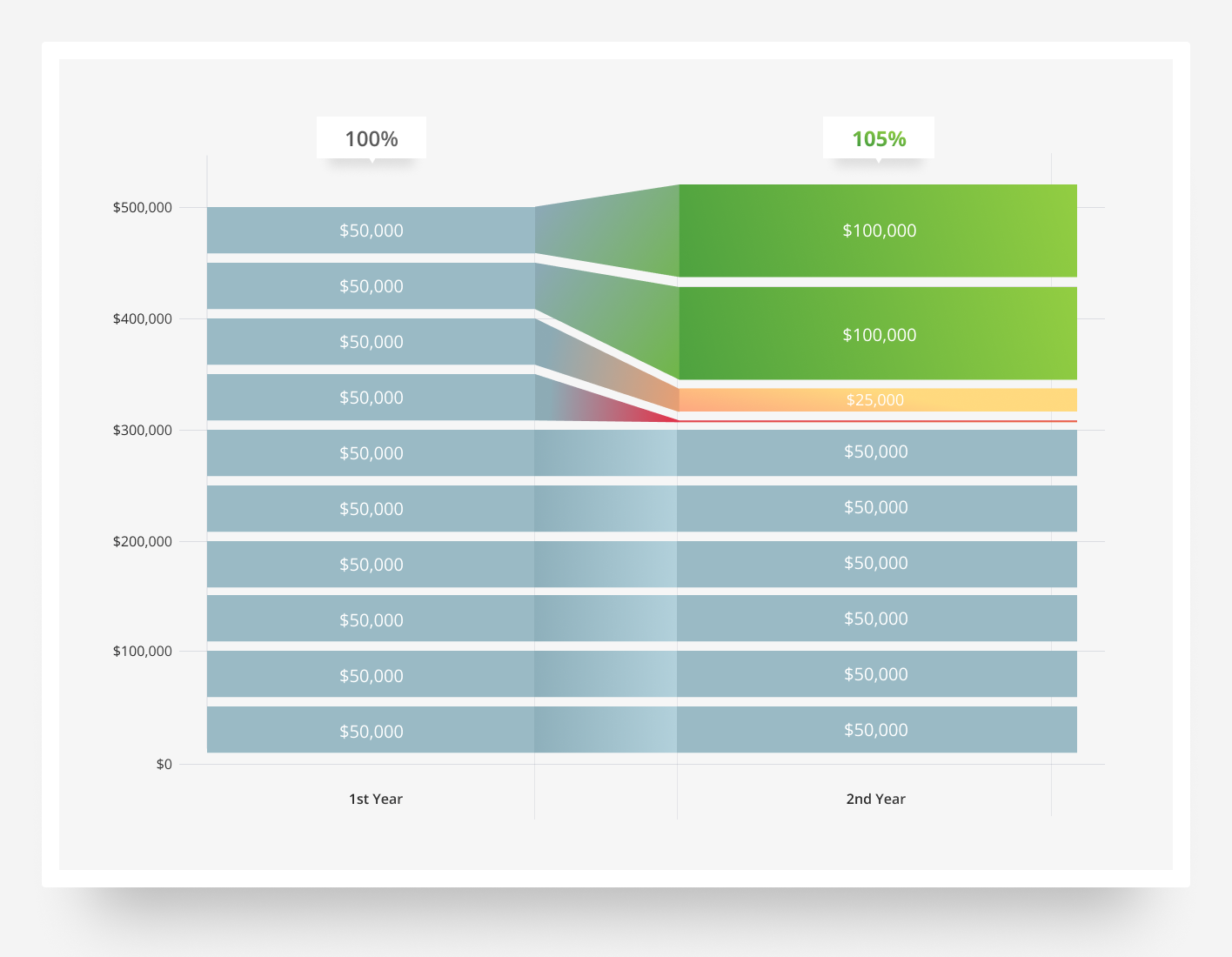Net Revenue Retention
Net Revenue Retention (NRR) paints a comprehensive picture of how many existing customers remain loyal over a specified period. It encapsulates the effects of expansion revenue, downgrades, and cancellations.
You can calculate your NRR as a percentage like:
Here's a breakdown:
- Starting MRR: Monthly Recurring Revenue at the start of the period.
- Expansion MRR: Additional MRR gained from existing customers (e.g., from upsells).
- Churn MRR: MRR lost from customers who cancelled.
- Contraction MRR: MRR reduced due to downgrades or discounts.
For example, you sign annual contracts. In the first year, you have ten customers with a $50,000 annual contract. That's $500,000 in annual revenue. In the second year, one customer decides to keep their contract, one to downgrade to $25,000, and two to upgrade to $100,000. Your new annual revenue will be:
And your NRR will be

The revenue growth illustrates the power of retention and expansion. As our example shows, despite no new customer acquisition, by focusing on existing customers we can grow our revenue even during challenging times.
Related
Last updated on